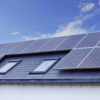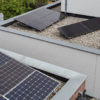Solar power is easily one of the fastest growing industries in Australia. Just over a decade ago, there were around 100,000 solar power systems all over Australia. By 2020, over 2.4 million solar power systems were online, adding 10.7 gigawatts of electricity to the grid.
The reasons behind Australia’s solar boom are many. Low cost of solar panels, abundance of sunlight, and enthusiasm for clean energy are usually cited here.
But while Australia always had immense solar potential, solar rebates from government and private agencies are by far the biggest driver of solar adoption. These subsidies along with the lack of red tape have helped decrease the cost of going solar. Consequently, people in more income brackets can afford to install solar panels on their homes today than ever before.
Here’s all you need to know about existing solar subsidies, and how they can help you.
How Solar Rebates Work in Australia
Every country has their own solar subsidy program. In Australia, solar incentives are offered from:
- Federal government.
- Some state governments.
- Solar installers.
Out of these, the federal government’s solar incentive scheme is by far the most popular. Called Small-scale Technology Certificates (STC), the program issues certificates against installed solar PV, hot water, hydro or wind powered systems. The amount of electricity generated or displaced from the grid determines STC quantity and value.
Aside, from STCs, you can earn state-sponsored subsidies on your solar investment as well. Not all states have running solar subsidy programs, though. These range from percentage discounts on purchased solar power systems, to loans and fixed rebates.
Finally, some installers may offer cashbacks and rebates of their own to buyers as well. Since these can vary greatly, we will focus on government rebates here.
Federal Solar Incentives
We’ve already covered the definition above. However, it is worth noting that federal rebates aren’t rebates at all. The subsidy isn’t coming from government sources per se. Rather, the federal government issues a certain number of STCs based on the size of your solar power system and your location.
You can then trade your STCs in exchange for a discount on your solar power system or cash. Since they are traded, STCs don’t command a fixed value and can fetch anywhere from zero to 40 AUD depending on demand and market conditions.
But, who will buy your STCs, you ask? Government regulations require fossil fuel based utilities to either invest in renewable energy projects, or purchase other people’s rights to the same through STCs. Since STCs are a more cost-effective way for utilities to fulfil their renewable energy obligations, they are usually very proactive in purchasing them.
You can earn federal STCs if your solar power system meets the following criteria:
- Your system is equal to or less than 100 kW in size.
- Your panels and inverters are approved by the Clean Energy Council.
- The system is installed by a Clean Energy Council accredited installer.
STCs also have a time-based depreciating value called “deeming period”. Starting Jan 2017, STC value was set to decline by 1/15th every year till 2035 when they will be phased out. So, there’s still plenty of time to use them to help finance your solar power system.
Here’s an example. Let’s say you install a 5 kW solar power system in Melbourne on 20 Jan, 2021. A quick run through this STC calculator tells us you can get 59 STCs against a deeming period of 10 years. Since the present value of a STC is AUD 39.5, you will earn a total of AUD 2,330.5 (59 STCs X AUD 39.5) on your solar investment. This amount is typically accounted for in the installation bill.
State Solar Rebates
Aside from STCs, which are valid nation-wide, some states offer their own solar subsidies as well. Here are the ones available as of 5th Jan, 2021 —
ACT Solar for Low-Income Program: Offers a 50% solar rebate to pensioners capped at AUD 2,500. Interest-free loans are also available.
NSW Empowering Homes Program: Provides interest free loans to persons with a household income of AUD 180,000 or more. Eligible homeowners can either apply for a loan of AUD 9,000 for battery storage, or AUD 14,000 for solar PV system + battery installation.
VIC Solar Panel Rebate: A rebate of upto AUD 1,850 and interest-free loans is offered to homeowners and rental property owners. The rebate is scheduled to end on 30 June 2021.
Conclusion
Depending on where you’re living, you can hope to slash a significant portion of your solar investment thanks to the many rebates and incentives available. Since the upfront cost of solar power systems are a big deterrent against their adoption, solar rebates are powerful tools in helping more people invest in clear energy.
Interested in finding the best solar panels at the best price? Use bidmysolar™ to check out the latest solar modules. You can cross reference them against price, performance, wattage or make to find the best fit for your requirements.





